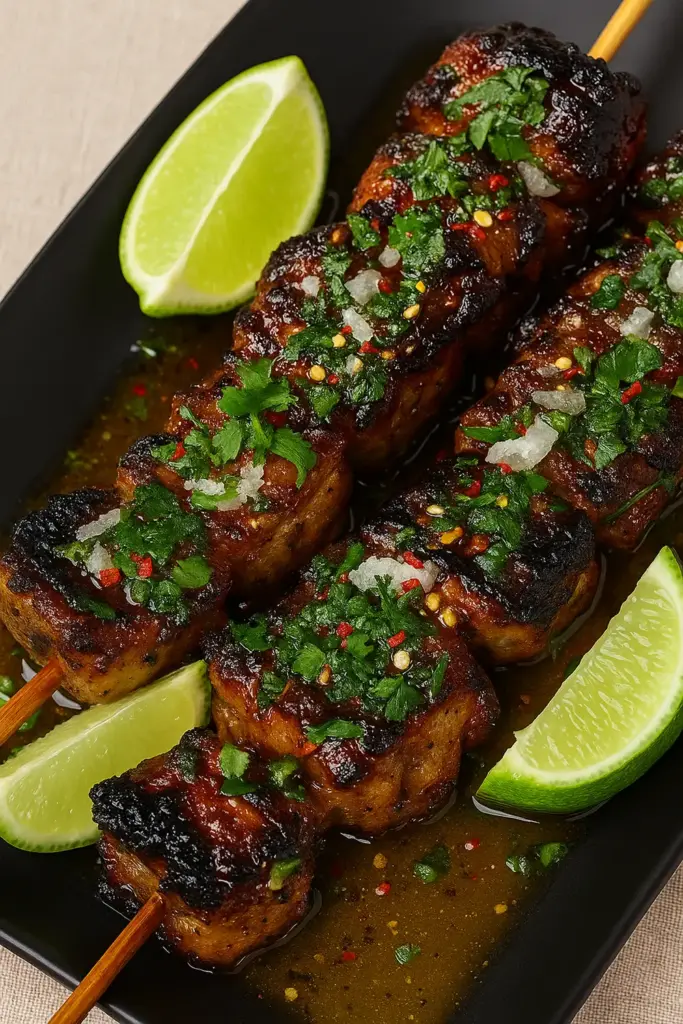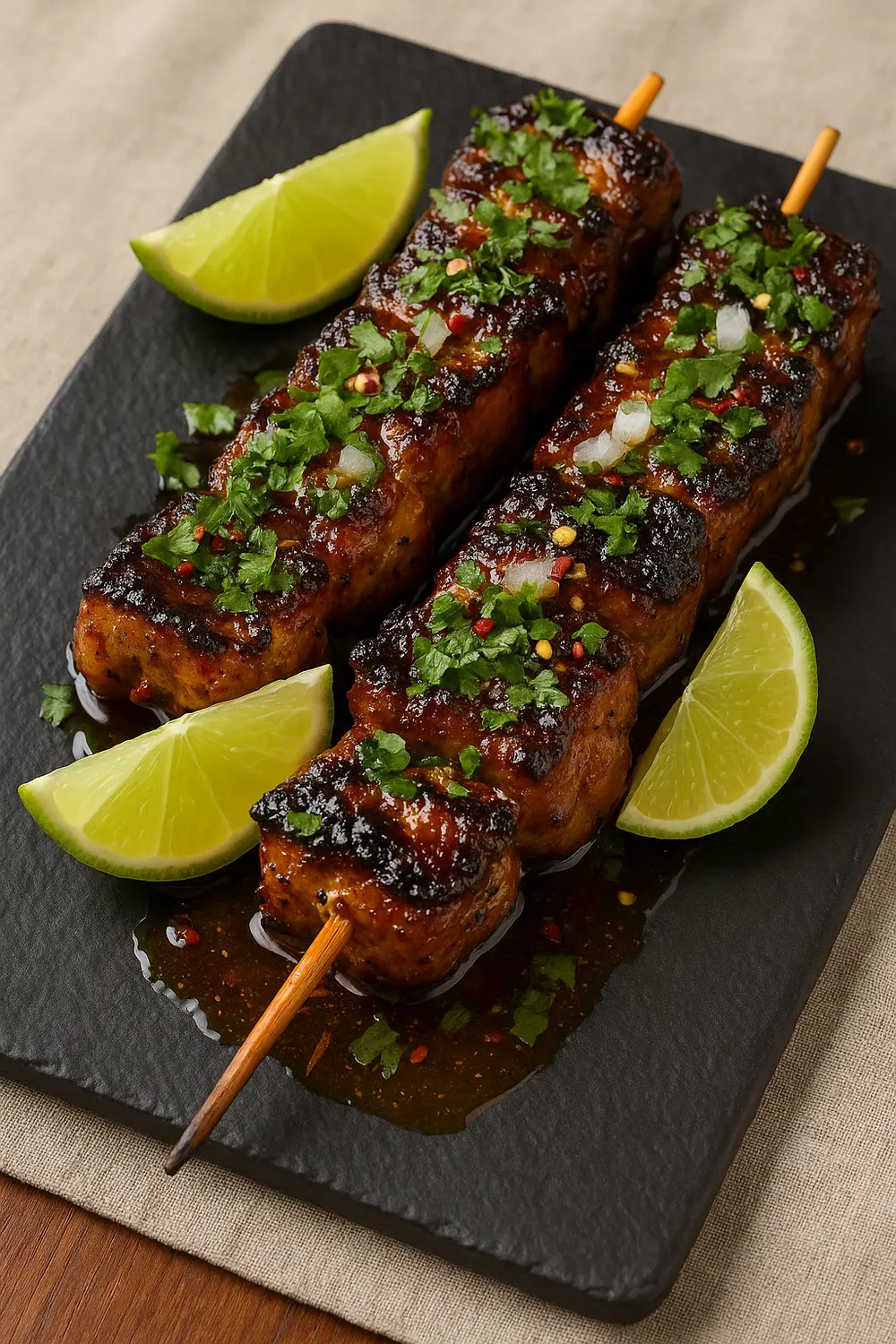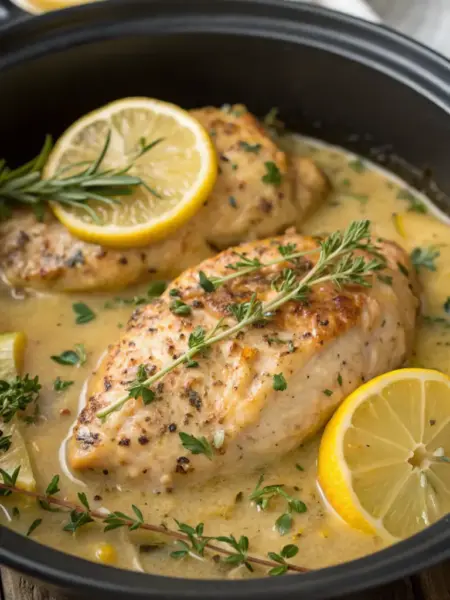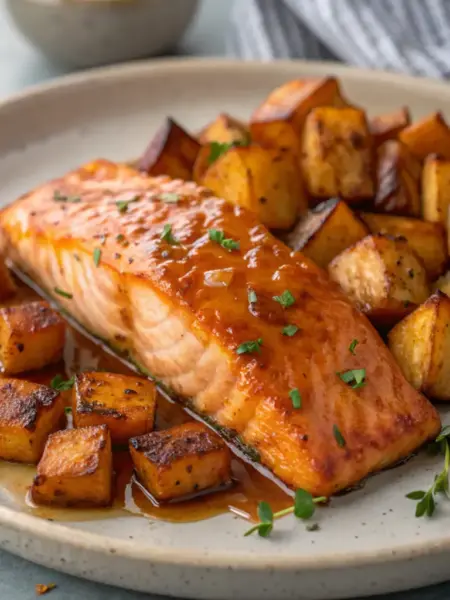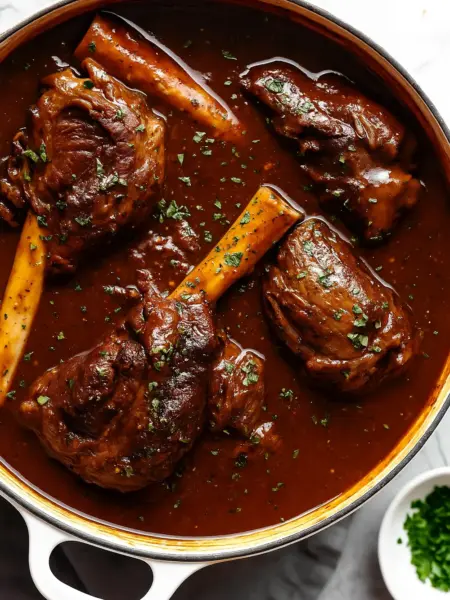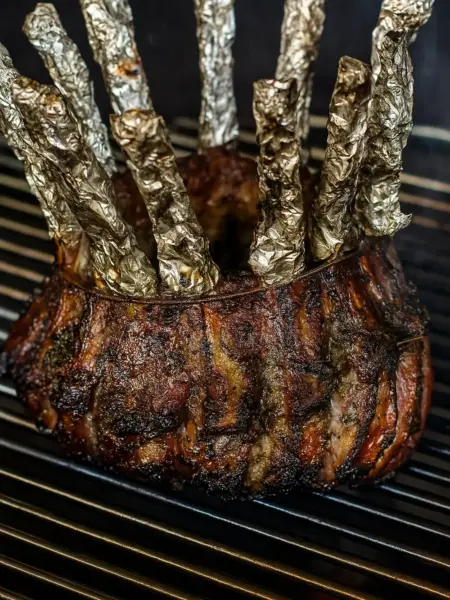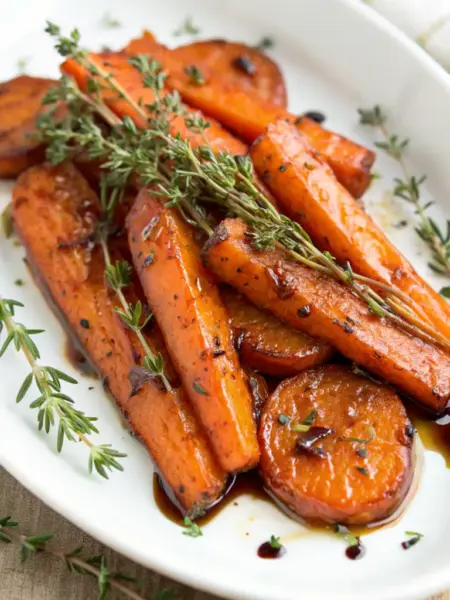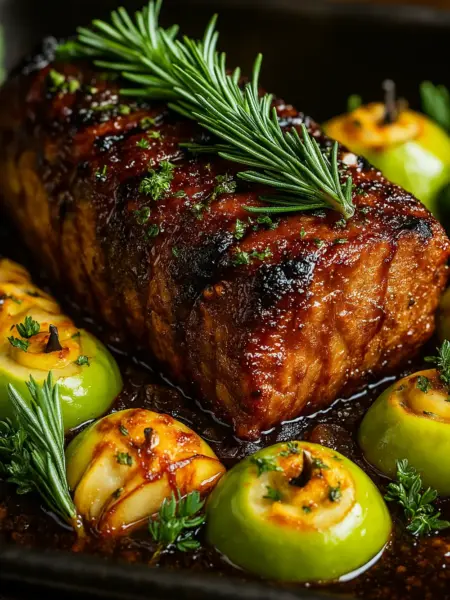This post may contain affiliate links, meaning I may earn a commission if you make a purchase, at no extra cost to you. I only recommend products I trust. Thank you for your support.
This easy grilled Thai chicken skewers recipe features juicy, charred, boneless, skinless chicken thigh fillets marinated in traditional Isaan-style flavors, then grilled to golden perfection and served with a spicy Nam Jim Jaew dipping sauce.
While this recipe uses the convenient skewer format of satay, its flavors are rooted in traditional Gai Yang, which emphasizes fresh aromatics and the use of fish sauce and lemongrass for a savory-sweet depth.
We use boneless, skinless chicken thighs because their higher fat content helps them stay juicy on the high heat of the grill, keeping every skewer succulent and moist.
The chicken is steeped in an Isaan-style marinade utilizing kecap manis, fish sauce, palm sugar, and coconut milk, which caramelize beautifully on the grill to create a sticky, dark glaze, reminiscent of the irresistible skewers found on the streets of Thailand.
This chicken satay skewers recipe serves approximately four people as a main course (about 2 to 3 skewers per person) or up to eight people if served as an appetizer or part of a larger party spread.
These grilled chicken skewers are perfect for family dinners, casual gatherings, backyard summer BBQs, or outdoor potlucks with friends.
✅ Take a moment to read through the whole post for the ingredient list, expert tips, and equipment suggestions. The full recipe is right below.
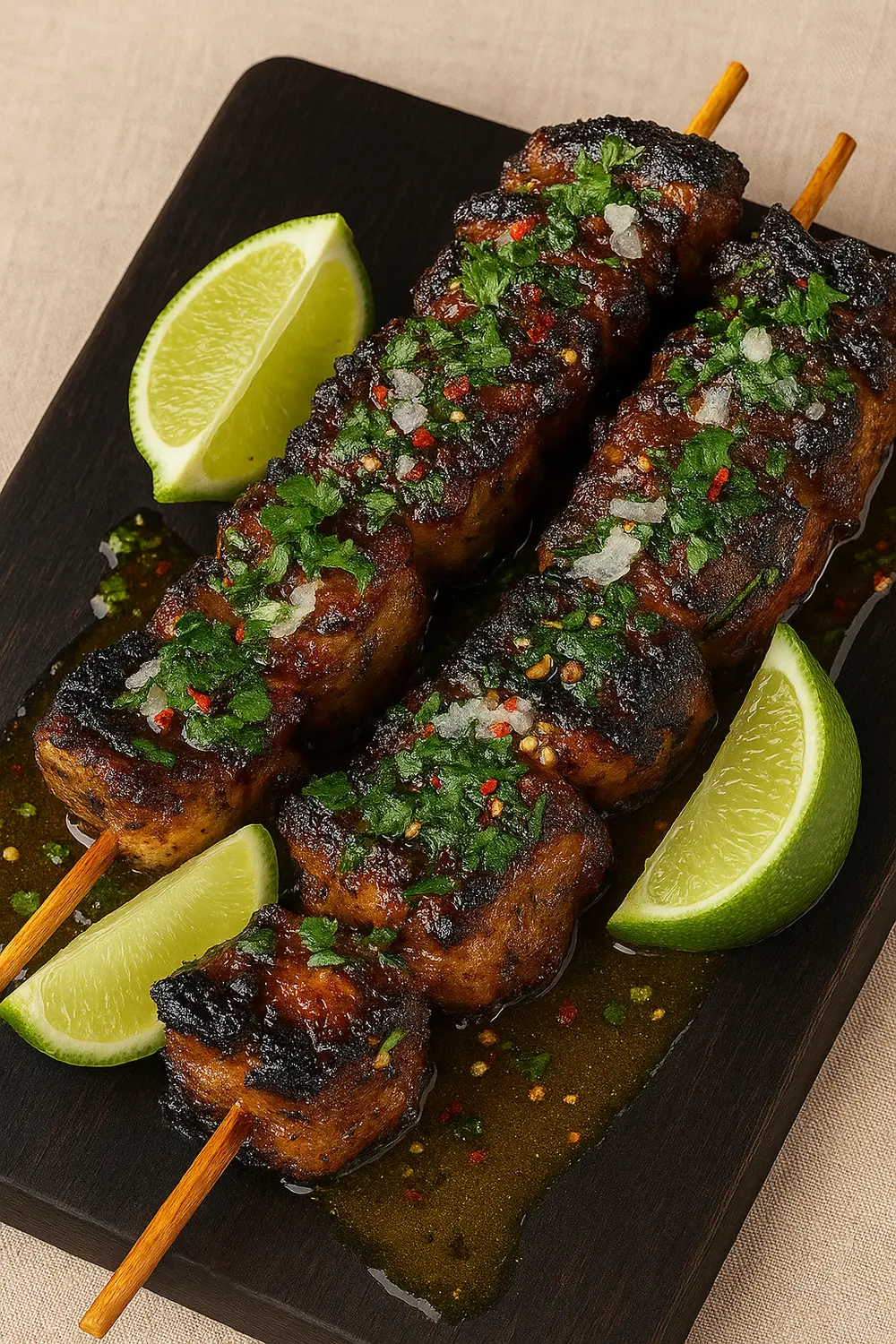
Key Ingredients for This Thai Chicken Skewers Recipe
The magic of these Thai chicken skewers is not just in the cooking process, but in the meticulous selection and preparation of the core aromatic ingredients:
1. Boneless, Skinless Chicken Thigh Fillets
- We use the thigh because it has more fat and connective tissue than lean chicken breast, which helps it stay juicy and tender under the high heat of the grill.
- As the fat renders, it bastes the meat from the inside out, guaranteeing that your chicken skewers remain juicy, tender, and succulent, rather than drying out.
2. Lemongrass
- This ingredient provides the signature bright, complex, and high-pitched citrus fragrance found in classic Thai cuisine.
- When you pound the fibrous white bulb into a paste, it releases a potent, clean scent that immediately sets the tone for the entire dish.
3. Coriander Roots and Stems
- While most Western recipes only call for the leaves, the roots and tough stems of the coriander (cilantro) are the secret weapon for deep, earthy Thai flavor.
- When pounded with garlic and peppercorns, they form a fragrant, fibrous paste that clings tightly to the chicken, helping the marinade penetrate deeply into the meat.
4. Fish Sauce (Nam Pla)
- This salty, savory, fermented liquid is the cornerstone of Thai seasoning, providing the necessary umami depth and salt.
- It works alongside the sugar to create the perfect balance of savory, sweet, and pungent flavors.
5. Kecap Manis (Sweet Soy Sauce)
- While traditionally Indonesian, this thick, syrupy sweet soy sauce is what delivers the rich, dark, and sticky glaze that characterizes the best street food grilling.
- Its high sugar and molasses content caramelizes beautifully, giving the skewers their stunning mahogany color.
6. Palm Sugar
- Used as the primary sweetener, palm sugar is preferred over granulated white sugar because it has a softer, caramel-like flavor and melts at a lower temperature, promoting a smoother, less aggressive caramelization on the grill.
7. Coconut Milk
- Full-fat coconut milk is used to tenderize the meat, thanks to its fat content, ensuring the chicken stays succulent while adding a subtle, creamy richness that complements the bold, savory spices.
8. Thai Tamarind Paste
- This concentrate provides the essential fruity, acidic, and slightly savory sourness that perfectly counterbalances the sweetness of the glaze and the intense spice of the chili flakes.
- It’s the sour backbone of the Nam Jim Jaew dipping sauce.
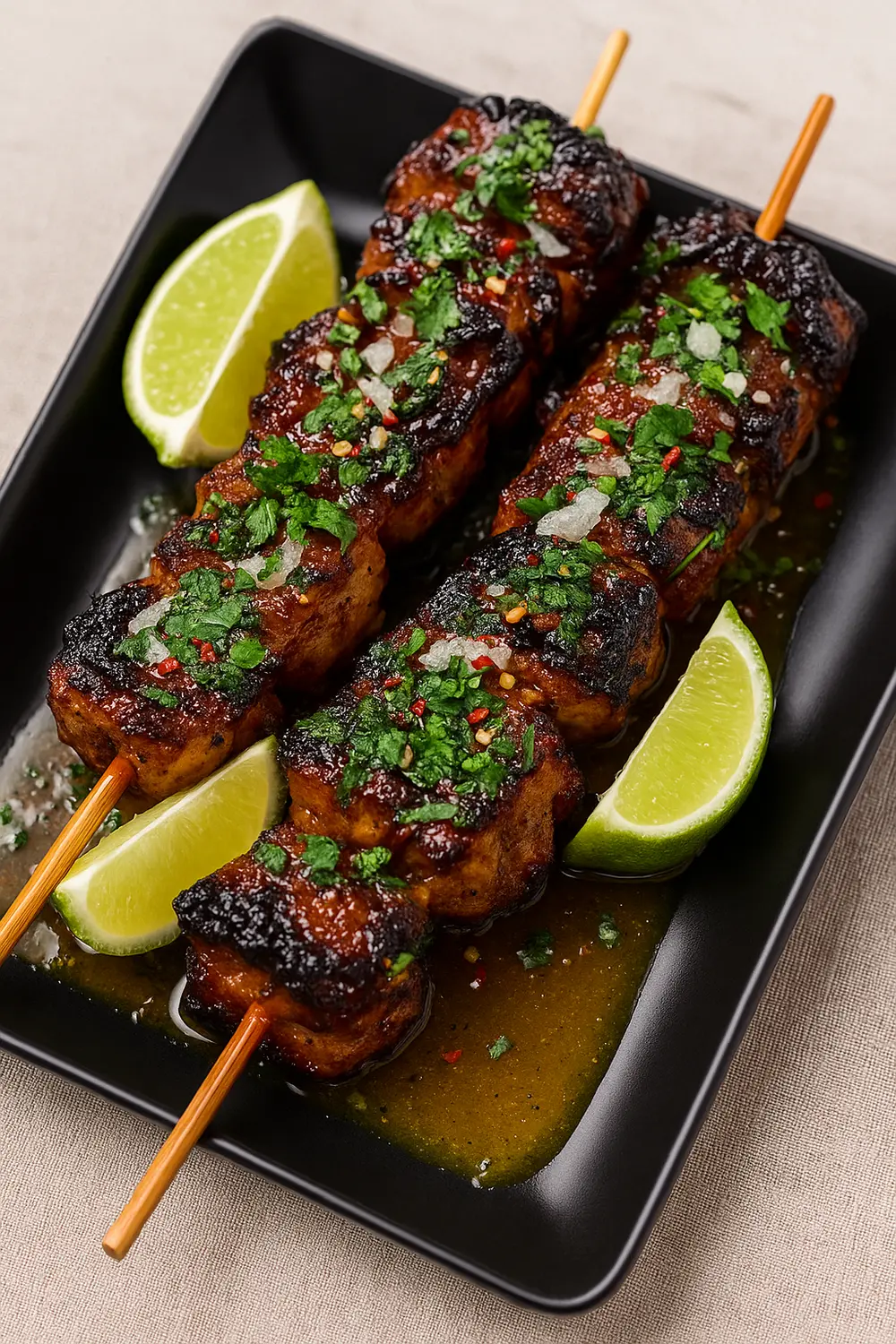
Essential Tools for Making This Chicken Satay Skewers Recipe
Having the right kitchen tools ensures both authenticity and a stress-free cooking experience:
- Mortar and Pestle (Highly Recommended): This tool is key for authentic Thai flavor, used for pounding lemongrass, coriander roots, and garlic to release their oils and create a deeply fragrant, potent paste.
- High-Speed Blender or Food Processor: If a mortar and pestle is unavailable, a high-speed blender is an acceptable substitute for creating the marinade paste, though the resulting texture will be smoother.
- Wooden or Metal Skewers: You will need 8 to 12 skewers, depending on size; soak wooden skewers for at least 30 minutes to prevent burning, or use metal skewers, which are reusable and conduct heat well.
- Charcoal or Gas Grill: Charcoal or gas grills are ideal, providing direct high heat for quick cooking and caramelizing the glaze while adding a smoky char.
- Instant-Read Meat Thermometer: A reliable digital thermometer is essential to pull the chicken skewers at 160°F, ensuring perfect doneness and maximum juiciness.
- Grill Brush and Tongs: Use a sturdy set of tongs to turn the skewers and a clean brush (separate from the marinade) to apply the reserved glaze, preventing sticking and managing high heat.
Why You’ll Fall in Love with These Grilled Chicken Skewers
Beyond just tasting great, this Thai chicken skewers recipe offers several compelling reasons why it will become your new favorite grilling tradition:
- Unrivaled Juiciness and Texture: Thanks to the use of chicken thighs and a long marination time, you will never have to worry about dry, tough grilled chicken skewers again.
- Easy to Meal Prep: Most work is in pounding the marinade, and with an overnight marinate, the dish can be prepped a day ahead and grilled in just 15 minutes.
- Rich in High-Quality Protein: Chicken thighs are an excellent source of protein, which is essential for muscle repair, growth, and prolonged satiety (the feeling of fullness).
- Good Source of Essential Minerals: Chicken is naturally rich in essential minerals, particularly Iron (important for energy and oxygen transport) and Potassium (maintaining healthy blood pressure and fluid balance).
- B Vitamin Content: Chicken meat provides important B vitamins, such as Niacin (Vitamin B3) and others, which play a crucial role in converting food into usable energy (metabolism).
- Suitable for Low-Carb Diets: While the marinade contains natural sugars from ingredients like palm sugar and kecap manis, the base of the chicken is naturally low in carbohydrates, making it excellent for those following a low-carb eating plan.
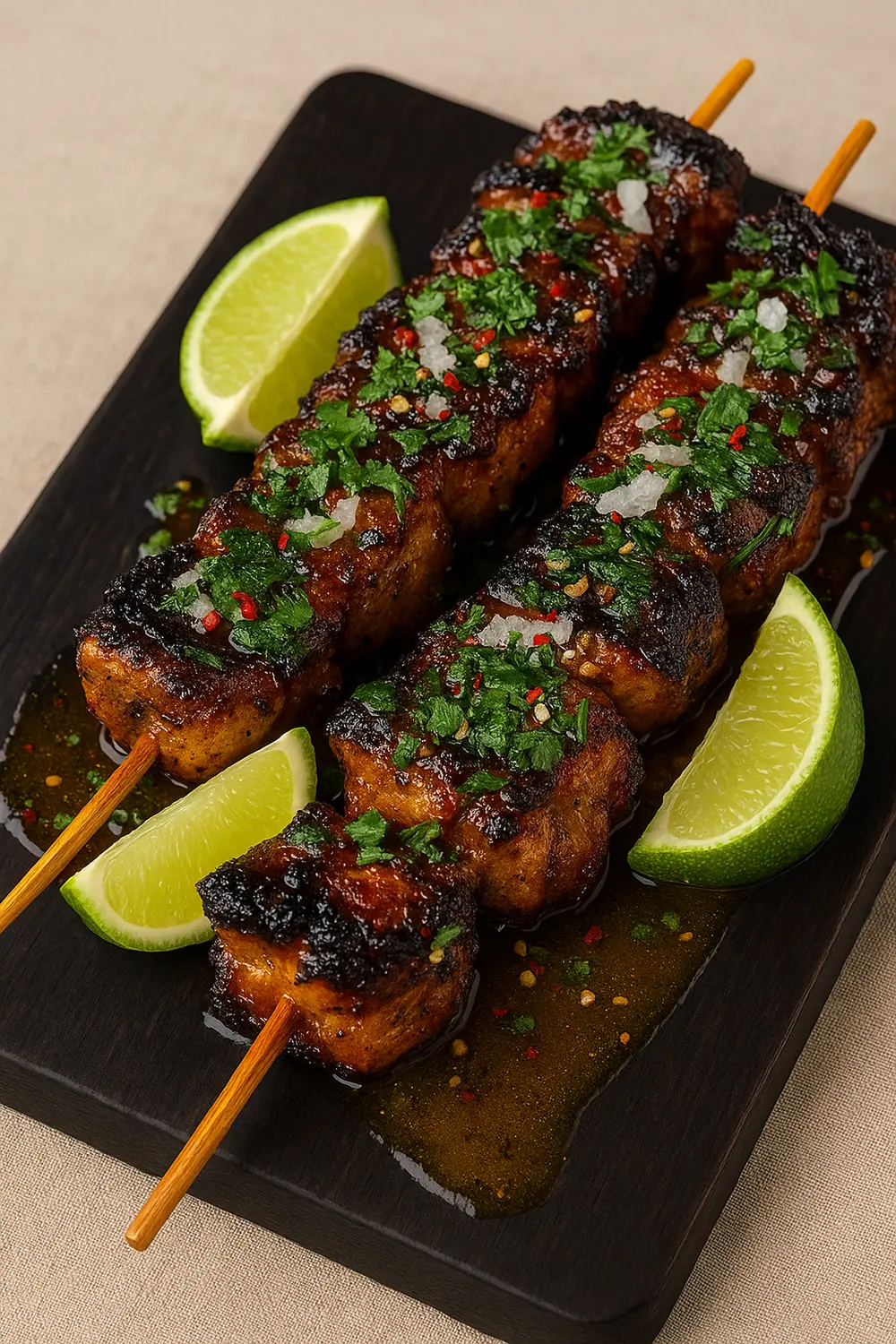
What to Serve with Chicken Skewers
These rich, savory grilled Thai coconut chicken skewers require side dishes that provide a cooling, textural, or acidic counterpoint to balance the meal:
- Thai Slaw: A crunchy slaw made with shredded cabbage, carrots, and herbs dressed in lime juice and fish sauce provides a refreshing, zesty side that cuts through the richness of the skewers.
- Sticky Rice (Khao Niao): Classic accompaniment for Isaan-style grilled chicken (Gai Yang). It soaks up the marinade and dipping sauce beautifully.
- Fresh Herb Salad (Yam Thai-style): A mix of fresh cilantro, mint, Thai basil, and thinly sliced cucumber or carrots, lightly dressed with lime juice, fish sauce, and a pinch of sugar.
- Grilled Vegetables: Stir-fried Thai green beans with garlic and chili add a crisp contrast, while grilled romaine with a light vinaigrette provides a smoky, refreshing balance to the rich chicken.
Pro Tips for Making the Best Chicken Skewers
Achieving that perfect, sticky-sweet, and juicy result relies on a few expert techniques that elevate the recipe from good to the best chicken skewers:
- Commit to Thighs, Not Breasts: Always use boneless, skinless chicken thighs, as their higher fat content helps them stay juicy and withstand the high heat of grilling and glazing.
- Maximize Flavor by Pounding: Instead of mincing, pound the aromatics with a mortar and pestle to make a fibrous paste that clings to the chicken and releases more flavorful oils.
- Don’t Rush the Marination: Marinate the chicken for ideally overnight, so the intense aromatics fully penetrate the meat, but avoid over-marinating to prevent a gummy texture.
- Space the Chicken on Skewers: Thread the chicken onto the skewers with a small gap between each piece to ensure even cooking while keeping the meat juicy.
- The Two-Step Glazing Technique: Grill the skewers over medium-high heat, turning often, and apply the reserved basting glaze only during the final 2 to 3 minutes to caramelize the sugars without burning.
Final Remarks
This Thai chicken skewers recipe delivers juicy, charred chicken fillets infused with the bold flavors of lemongrass, garlic, coriander, and fish sauce, all perfectly balanced by a tangy, spicy Nam Jim Jaew dipping sauce.
Feel free to swap chicken thighs for drumsticks or add extra aromatics like Thai chilies or kaffir lime leaves for an extra punch of flavor.
Pair it with a crisp cucumber salad or a side of quick-pickled vegetables for a refreshing contrast, or serve alongside jasmine rice and extra dipping sauce for a full meal that’s sure to impress.
If you give this recipe a try, we’d love to hear how it turned out. Share your version or drop your thoughts in the comments.
You’ll find the full recipe and cooking instructions just below.
Grilled Thai Chicken Skewers Recipe (Gai Yang)
This easy Thai chicken skewers recipe serves four and features boneless, skinless chicken thigh fillets marinated Gai Yang-style with lemongrass, fish sauce, and sweet soy, then grilled to perfection, and served with a spicy Nam Jim Jaew BBQ dipping sauce.
Ingredients
For the Chicken
For the Marinade
For the Dipping Sauce
For Serving and Garnish
How to Make Thai Chicken Skewers (Step-By-Step Instructions)
Prepare the Skewers and the Chicken
- If using bamboo or wooden skewers, they must be soaked in water for a minimum of 30 minutes.
- This prevents them from igniting during the high-heat grilling process.
- While the skewers soak, trim the chicken thighs of any excess large pieces of fat or gristle.
- Then cut them into uniform 1½-inch cubes.
- Using kitchen shears often makes this process easier than using a knife.
Make the Gai Yang Paste
- In a mortar and pestle, combine the peeled garlic, sliced lemongrass, coriander roots/stems, and black peppercorns.
- Pound them vigorously until a coarse, highly fragrant paste forms.
Prepare the Marinade
- In a large bowl, whisk together the fish sauce, kecap manis, soy sauce, palm sugar, neutral oil, coconut milk, and turmeric.
- Stir in the freshly pounded Gai Yang paste.
- Immediately measure out and reserve ¼ cup of this liquid marinade into a separate, clean container.
- This reserved portion is your safe basting glaze for later.
Marinate the Chicken
- Add the cubed chicken thighs to the remaining marinade.
- Use your hands to thoroughly rub the paste and liquid into the chicken.
- Cover and refrigerate for at least 1 hour or ideally overnight for the complex flavors to fully penetrate the meat.
Prepare the Nam Jim Jaew Dipping Sauce
- Dry-toast the glutinous rice in a clean, dry skillet over medium-high heat.
- Stir constantly until the grains are deep golden brown and release a nutty, smoky aroma.
- Grind the toasted rice in a spice grinder or mortar and pestle until a fine powder is formed.
- In a small serving bowl, combine the tamarind paste, fish sauce, palm sugar, and lime juice.
- Stir until all sugar is dissolved.
- Finally, stir in the toasted rice powder, chili flakes, shallots, and fresh herbs.
- Taste and adjust to suit your preference.
Thread the Chicken and Prep the Grill
- Thread the marinated chicken pieces onto the soaked wooden or metal skewers.
- Keep a little space between each piece so the heat can circulate evenly.
- Discard the remaining raw marinade that touched the chicken.
- Preheat your grill (charcoal or gas) to medium-high heat, targeting a temperature between 425°F and 450°F.
- Clean the grates thoroughly and lightly oil them to prevent sticking.
Grill and Glaze the Chicken Skewers
- Establish a two-zone heat system on your grill if possible.
- One side hot (direct heat) and one side cooler (indirect heat).
- Place the chicken skewers over the direct, medium-high heat.
- Grill for 7 to 8 minutes, turning frequently (every 1 to 2 minutes) to achieve even coloring and prevent the high-sugar glaze from burning prematurely.
- Once the chicken pieces are lightly charred and almost cooked through, begin the basting process.
- Liberally brush the skewers with the reserved (clean) marinade/glaze, turning them constantly for an additional 3 to 5 minutes.
- The glaze will rapidly thicken, caramelize, and become sticky.
Garnish and Serve
- Once cooked, transfer to a clean cutting board or serving platter.
- Rest the grilled chicken skewers for 2 to 3 minutes.
- Garnish generously with fresh cilantro, chili flakes, and shallots.
- Serve hot with the spicy Nam Jim Jaew dipping sauce and fresh lime wedges.
Nutrition Facts
Servings 4
Serving Size 2 skewers per person
- Amount Per Serving
- Calories 360kcal
- % Daily Value *
- Total Fat 20g31%
- Saturated Fat 9g45%
- Cholesterol 66mg22%
- Sodium 315mg14%
- Potassium 607mg18%
- Total Carbohydrate 9g3%
- Dietary Fiber 2g8%
- Sugars 6g
- Protein 35g70%
- Vitamin A 210 IU
- Vitamin C 10 mg
- Calcium 41 mg
- Iron 2.5 mg
* Percent Daily Values are based on a 2,000 calorie diet. Your daily value may be higher or lower depending on your calorie needs.
Note
- Soak bamboo or wooden skewers for at least 30 minutes to prevent them from burning on the grill.
- Never use the raw chicken marinade for basting; only use the reserved clean glaze set aside beforehand to avoid harmful pathogens.
- Because of the palm sugar and sweet soy, the glaze can burn easily; if the skewers start to blacken, move them to a cooler part of the grill or lower the heat.
- Make sure the aromatic paste is finely blended, as large pieces of lemongrass or garlic can burn on the grill and create bitter spots.

